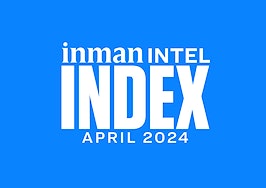Teresa Boardman is a long-time columnist with 400-plus Inman columns under her belt. She writes about her real estate observations and experiences as an officeless indie broker in Minnesota.
Every American city has clusters of ethnic and cultural populations and the Minneapolis-St. Paul area is no different.
What distinguishes the Twin Cities is that it has one of the largest disparities in education, poverty, homeownership and wealth between black and white residents of any U.S. metro area, and this can be directly attributed to the real estate industry.
This stark reality is the subject of an exhibit called “Owning Up” put on over the summer by the St. Paul Area Association of Realtors (SPAAR) in its front lobby. The exhibit comprises of five illustrated panels that are six or seven feet high that explain the history of housing segregation in the Twin Cities. The subject matter is also part of a PBS documentary named “Jim Crow of the North.”
The panels show how real estate agents, builders, lenders, and others contributed to a system that is the root cause of current homeownership disparities. In 2018, the committee partnered with the Mapping Prejudice Project from the University of Minnesota. The committee wanted to learn about the underlying causes of disparities in homeownership as a way to encourage conversations and solutions for addressing these disparities.

Owning Up Exhibit Minneapolis
According to the Mapping Prejudice Project, segregation in the Twin Cities began with the creation of a racially restrictive deed in 1910 when a couple named Henry and Leonora Scott sold off a property. The deed to the property stated that the “premises shall not at any time be conveyed, mortgaged or leased to any person or persons of Chinese, Japanese, Moorish, Turkish, Negro, Mongolian or African blood or descent.”
Henry Scott then went on to become the president of the Seven Oaks Corp., a real estate development company that included this language in the deeds to properties across the city.
But the approach was then adopted by public officials, too.
“In the 1930s, federal housing administrators endorsed these legal instruments, requiring them for projects that used federally-backed financing,” explain the mapping project creators. “Lenders followed suit, accepting the rationale that covenants provided essential insurance for their investments in residential property. Banks made it a routine practice to ‘redline’ or deny loans for properties in racially-mixed neighborhoods.”
Kevin Ehrman-Solberg, a native of Minneapolis and a University of Minnesota doctoral candidate, led a team that created an interactive map that shows the impact of these deeds on the Twin Cities’ development over time (below).
If you click through to the project’s web page, you can see how their use grew. You can then also look at the U.S. Census Bureau’s maps of where black, non-Latino residents lived between 2010 and 2014.
Realtors played a role in neighborhood segregation too. If you look at Article 34 in the 1924 Realtor Code of Ethics handbook it reads:
“A Realtor should never be instrumental in introducing into a neighborhood a character of property or occupancy, members of any race or nationality, or any individuals whose presence will clearly be detrimental to property values in that neighborhood.”

Article 34, 1924 Realtor Code of Ethics handbook
Before I saw the exhibit and read about the project, I had little awareness of racial deed restrictions. But then this June Minnesota Gov. Tim Walz signed into law a bill that allows property owners to attach an affidavit to their deed disavowing these covenants, many of which still exist (they just haven’t been digitized, the way Hennepin County’s have been).
Just over 50 years after the passage of the Fair Housing Act, and more than 70 years after the U.S. Supreme Court made the covenants unenforceable, we’re still living with the legacy of these racist covenants. We have such a long way to go when it comes to fair housing especially here in Minnesota.
The creators of the Mapping Prejudice Project found that “covenants created demographic patterns that remain in place in Minneapolis today. Residential segregation reinforces other disparities in employment, education and health care. Most notable is the gap in homeownership rates.”
While 78 percent of white families own homes in the Twin Cities, only 23 percent of blacks own their homes as of 2015, the latest available data from the Census Bureau. That’s among the lowest in the country. And this pattern of segregation occurs in cities across America.
Homeownership has long been considered the most important way middle class families can build wealth. On the national level, data from the Federal Reserve released in 2017 shows that the median net worth of white households in the United States is nearly 10 times the size of the average black household’s.
Today in Minneapolis, it isn’t about deed restrictions but more about micro-aggressions and prejudice.
Local builders publish entire magazines with pictures of new construction with pictures of white couples and their children inside. The housing is being marketed to specific demographics.
The real estate office for the large companies and franchises are almost universally located and even concentrated in neighborhoods that are mostly white and also have the highest home values. The offices of smaller companies are located throughout the city.
As the research and policy agency the Metropolitan Council of Saint Paul noted in its 2016 research brief on the disparities between blacks and whites in the area, the economic disparity between the city’s residents ultimately means a poorer workforce from which to draw.
“The Twin Cities region is among the most prosperous regions in the U.S.: Overall, our unemployment rate, home-ownership rate, and per capita income rank favorably compared with the 25 largest metropolitan areas. However, even with these assets, the presence and potential growth of our region’s disparities between white residents and residents of color may undermine our economic competitiveness and prosperity.”
And as Camille M. Busette, a senior fellow at the Brookings Institution, told the financial publication 24/7 Wall St., residential segregation has other knock-on impacts as well.
“People are not walking around, working together, going to school together, taking the same metro together, et cetera. So there isn’t a lot of familiarity” she told 24/7 Wall St. “People tend to hire people like themselves, so when you get residential segregation, you tend to also get employment segregation.”
My own clients and the people that my company serves tend to be mostly white, and a high percentage of the homes we sell are in mostly white neighborhoods. (To give you a sense of context, black residents make up 8.4 percent, or 245,500, of the area’s total population, and their numbers are projected by demographers to grow more rapidly than the white population.)
The legacy of this ignoble history, and our industry’s role in creating it, is too big for any one person to address.
However, the first step is to acknowledge it, and to understand it how it relates to today’s economic and demographic realities. For me, this new knowledge has heightened my awareness of the nature of the world and my sensitivities to the people around me.
Teresa Boardman is a Realtor and broker/owner of Boardman Realty in St. Paul. She is also the founder of StPaulRealEstateBlog.com.














